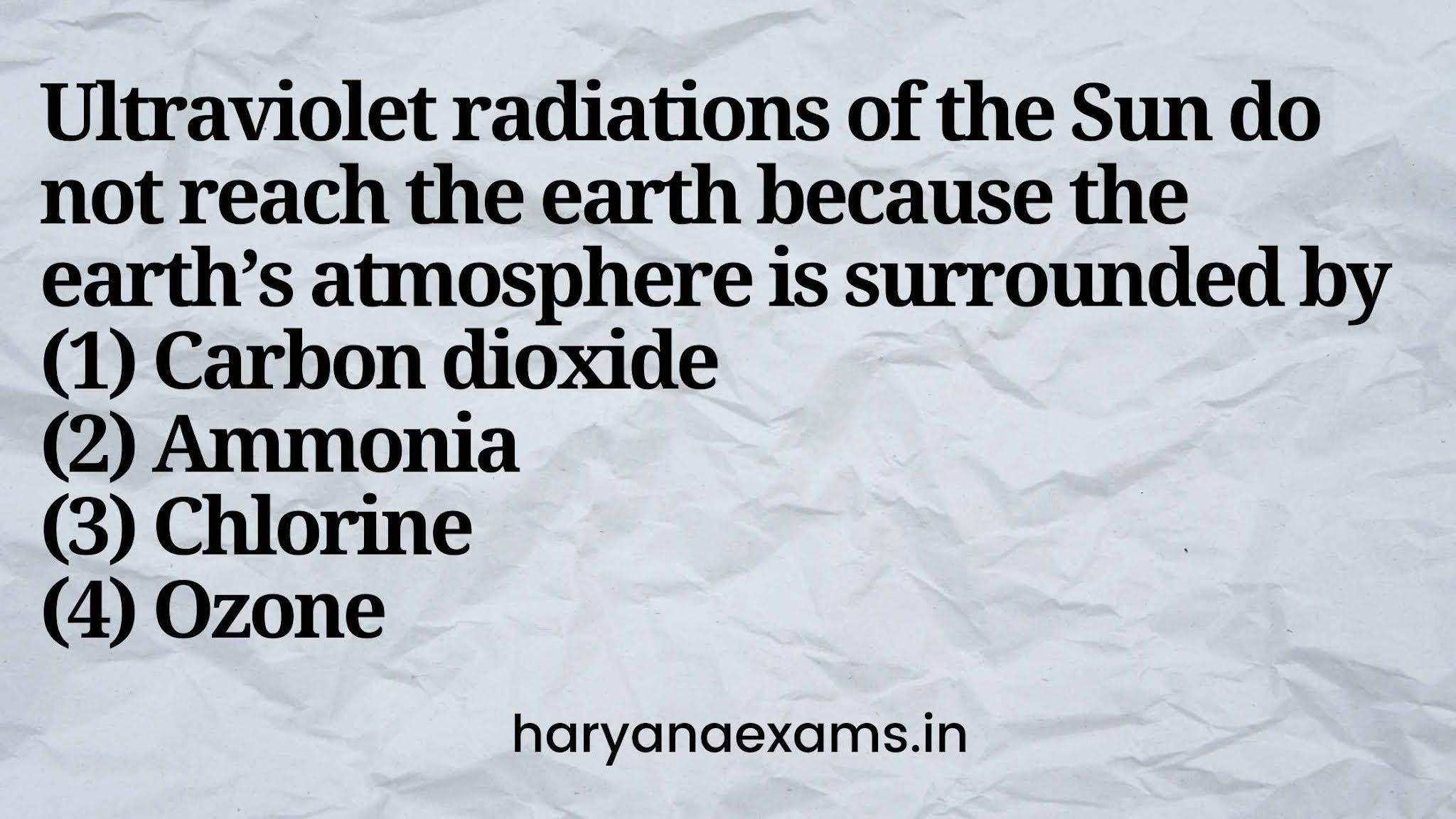Ultraviolet radiations of the Sun do not reach the earth because the earth’s atmosphere is surrounded by
(1) Carbon dioxide
(2) Ammonia
(3) Chlorine
(4) Ozone
Answer: (4) The ozone layer absorbs 97–99% of the Sun’s medium-frequency ultraviolet light (from about 200 nm to 315 nm wavelength), which potentially damages exposed life forms on Earth. Ozone is formed from di-oxygen by the action of ultraviolet light and also atmospheric electrical discharges, and is present in low concentrations throughout the Earth’s atmosphere. In total, ozone makes up only 0.6 parts per million of the atmosphere. Ozone is a powerful oxidant (far more so than di-oxygen) and has many industrial and consumer applications related to oxidation. This same high oxidizing potential, however, causes ozone to damage mucus and respiratory tissues in animals, and also tissues in plants, above concentrations of about 100 parts per billion. This makes ozone a potent respiratory hazard and pollutant near ground level.

